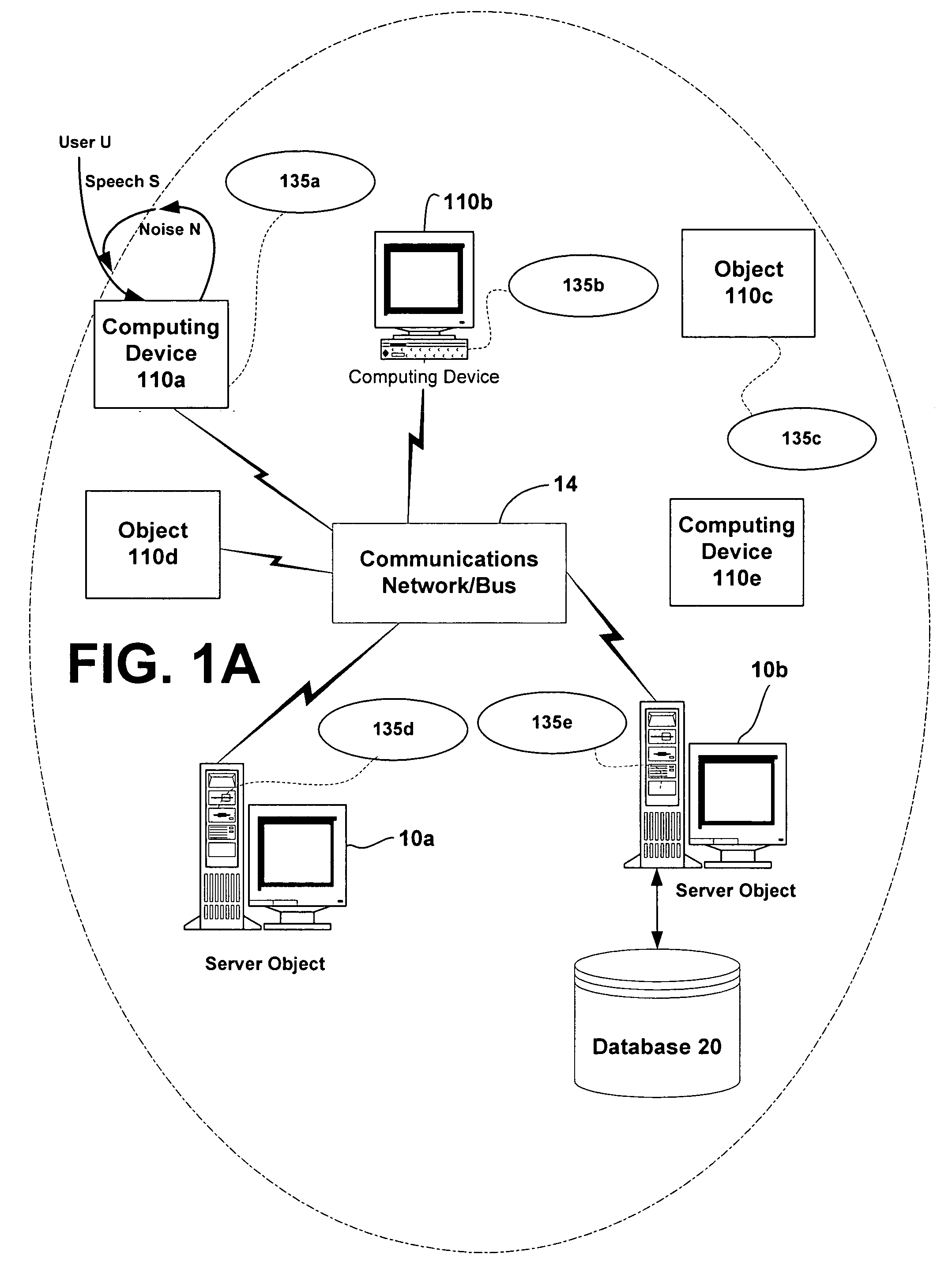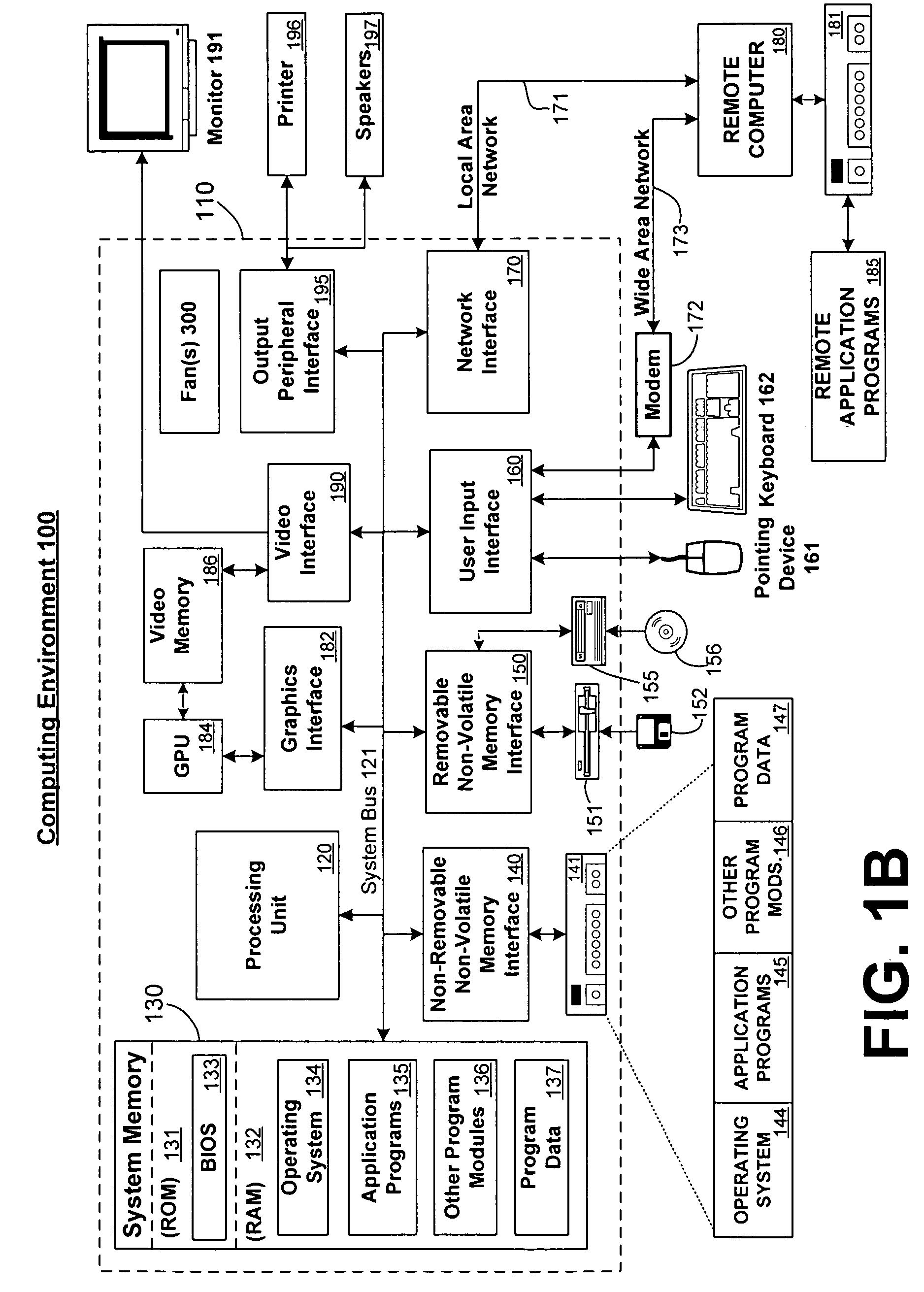Systems and methods for improving the signal to noise ratio for audio input in a computing system
a computing system and signal to noise ratio technology, applied in the field of systems and methods for improving can solve the problems of lowering the signal-to-noise ratio (snr), affecting the processing accuracy the pc and its components' noise interfere with the accurate processing of audio input signals, so as to improve the signal to noise ratio of audio input, improve the processing of voice, and improve the effect of audio signal input noise ratio
- Summary
- Abstract
- Description
- Claims
- Application Information
AI Technical Summary
Benefits of technology
Problems solved by technology
Method used
Image
Examples
Embodiment Construction
Overview
[0024]As mentioned, the present invention improves the signal to noise ratio for audio input by incorporating at least two microphones into the PC computing environment. The invention incorporates a plurality of microphones into the PC in such a way that noise from PC components is “subtracted” from an input audio signal, which increases the signal to noise ratio and improves audio processing accuracy.
[0025]The benefits of the invention are clear. In addition to improving the quality of the audio signal by boosting its significance relative to PC noise, the present invention relieves consumers of the burden of managing the acoustics of the PC, i.e., the consumer does not need to choose a microphone or decide where to place it in order to enjoy the benefits of highly accurate audio input. Another notable characteristic of the invention is that it corrects noise from inside the PC, not ambient noise from the user's environment. The present invention also provides a low-cost me...
PUM
 Login to view more
Login to view more Abstract
Description
Claims
Application Information
 Login to view more
Login to view more - R&D Engineer
- R&D Manager
- IP Professional
- Industry Leading Data Capabilities
- Powerful AI technology
- Patent DNA Extraction
Browse by: Latest US Patents, China's latest patents, Technical Efficacy Thesaurus, Application Domain, Technology Topic.
© 2024 PatSnap. All rights reserved.Legal|Privacy policy|Modern Slavery Act Transparency Statement|Sitemap



